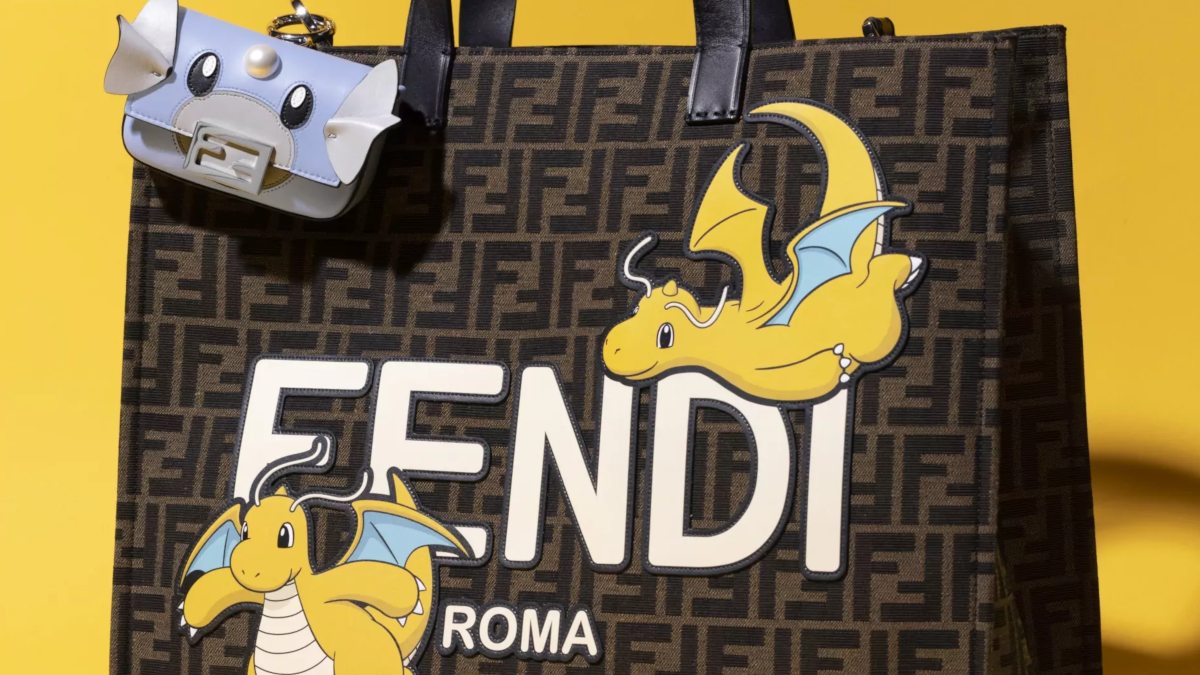If luxury lives in the realm exclusivity, and humour lives in a world of shared understanding of the expected, it follows that they are not particularly natural bedfellows. But this hasn’t stopped an increase in the use of humour and play as a reference point in the luxury sector, particularly in luxury fashion, where anime red boots and giant lion head broaches reign supreme. As brands jostle for relevance and attention in the busy landscape of our minds, is there a role for humour in the luxury market, and is it, as the current wisdom would have it, connecting better to Gen Z and millennials looking for brands with more personality?
Luxury fashion, to many people, has always been a little bit ridiculous, whilst to others, it is high art
It is this inherent tension within the category that drives its most innovative, important, and shareable moments — the fine line between the sublime and the ridiculous. Whether it’s Balenciaga’s $4,000 tape bracelet or AVAVAV’s runway at Milan Fashion Week 2024, in which spectators threw rubbish onto the clothes and models — how funny you find it depends on how seriously you take it. Even fashion provocateurs like influencer and rapper TOMM¥ €A$H can tread the line poorly, with a stunt at the Diesel show in 2023, in which he arrived dressed as a homeless person leading to criticism, despite, in his words, the stunt ‘convey[ing] a clear critique of the widespread cynicism surrounding trends like poverty chic, or homeless core.’
One of the core issues is that unless humour is part of your brand identity, then using it puts your brand equity at risk — if you are choosing to poke fun at yourself or your contemporaries, are you devaluing the product itself? One way to mitigate this risk is taking a more playful approach to brand activation such as Selfridges The Joke Shop that is occupying their pop-up space this March, where you can buy everything from a £5,760 Judith Leiber Couture clutch, to a £4 fake poo. Here we see Selfridges celebrate British humour, sourcing inspiration from old school joke shops (which they kindly repay by spotlighting on their social media channels) in a homage to authentic British-ness that is very much part of their brand DNA.
We see this sense of playfulness more widely in luxury fashion houses being expressed through the growth of toys, figurines and references to nostalgic childhood games such as Fendi’s collaboration with Pokémon or Balmain’s collaboration with Chinese toymaker Pop Mart.
Here we see brands attempting to appeal to younger consumers by leveraging themes of nostalgia, but also tapping into a cultural equity around ‘cuteness’ and playfulness that is emerging on the global stage from East Asia, particularly China which has seen a boom in the ‘art toys’ market for the last few years (and where the cultural capital of cute is more nuanced and potent, as explored in the exhibition ‘Cute’ at Somerset House). But is this version of humour that draws on themes of games, playfulness and innocence in line with the humour of Gen Z and millennials with whom luxury brands are trying to connect? Arguably, not.
The young consumer that the luxury market is so keen to tap into is expressing a different kind of humour than we are seeing from the runway, one that is savvier, edgier, knowing and far more self-deprecating. Take East London meme account Real Housewives of Clapton who skewer Solomon walking shoes, work jackets that have never seen a day of work in their life, and nervous sight-hounds.
On TikTok we see ‘Get Ready With Me’ videos that imagine picking up water rations from the Erwhon x Apple TV collab in a near future New York (written brilliantly about by Becks Collins for MediaCat). The rise of the -core suffix, including everything from croquettecore, corecore, and grandadcore, shows a clear trend of ironic, self-aware humour in the narrative of fashion.
When luxury fashion seeks to use humour as a way to connect to younger audiences, it is at risk of missing the mark. The context in which Gen Z and millennials are living (even those who are shopping luxury), is far more complex and precarious than the pure, artistic and exclusive world that luxury brands project.
Ideas are layered and the context in which they exist, outside of the hyper-controlled environment of an Instagram feed or a runway show, means that they are subject to interpretation, reflection, stitching and building. For luxury brands this means that you have to consider that people are not always taking you as seriously as you are.
Featured image: Fendi























